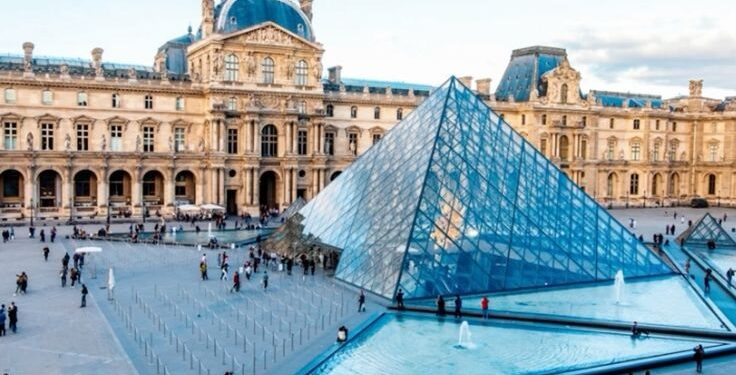The Louvre: A Cultural Icon in the Heart of Paris
The Louvre Museum, located in the heart of Paris, is one of the most renowned cultural institutions in the world. Known for its extensive art collection and historical significance, the Louvre attracts millions of visitors each year, making it a must-visit destination for art lovers and tourists alike. In this article, we explore the museum’s rich history, its remarkable collections, and the unique experiences it offers.
A Historical Overview
Originally built as a fortress in the late 12th century under King Philip II, the Louvre transitioned from a royal palace to a public museum during the French Revolution. The museum opened its doors to the public in 1793, showcasing a collection of artworks that reflected the wealth and power of the French monarchy.
Throughout the years, the Louvre has undergone several renovations and expansions, most notably the addition of the iconic glass pyramid designed by architect I.M. Pei, which was inaugurated in 1989. This modern structure serves as the museum’s main entrance and has become a symbol of the Louvre itself.
The Collections: A Treasure Trove of Art
The Louvre houses over 380,000 objects, with approximately 35,000 works of art on display at any given time. Its vast collection spans thousands of years and includes pieces from various cultures and civilizations, making it one of the most comprehensive art museums in the world.
The Masterpieces
Among the museum’s most famous masterpieces are:
- The Mona Lisa: Perhaps the most iconic painting in the world, Leonardo da Vinci’s “Mona Lisa” attracts millions of visitors each year. Housed in a climate-controlled glass case, the painting’s enigmatic smile and exquisite detail continue to captivate audiences.
- The Venus de Milo: This ancient Greek statue, believed to represent the goddess Aphrodite, is renowned for its beauty and grace. Discovered on the island of Milos in 1820, the statue is celebrated for its missing arms, which only add to its allure.
- The Winged Victory of Samothrace: Another highlight of the Louvre, this Hellenistic sculpture depicts the goddess Nike and is celebrated for its dynamic form and dramatic presentation. Positioned at the top of a staircase, the statue appears to be triumphantly descending, enhancing its sense of movement.
Diverse Collections
In addition to these masterpieces, the Louvre’s collections include:
- Egyptian Antiquities: The museum houses one of the largest collections of ancient Egyptian artifacts outside of Egypt, featuring mummies, sarcophagi, and everyday objects that shed light on the civilization’s culture and beliefs.
- Islamic Art: The Louvre’s Islamic Art department showcases a diverse array of objects, including ceramics, textiles, and metalwork, representing various regions and periods of Islamic history.
- European Paintings: The museum boasts an extensive collection of European paintings, with works by masters such as Rembrandt, Vermeer, and Delacroix, providing a comprehensive overview of artistic movements from the Renaissance to the 19th century.
Experiencing the Louvre
Visiting the Louvre can be an overwhelming experience due to its vast size and the sheer number of artworks on display. However, there are several ways to make the most of your visit.
Guided Tours
One of the best ways to explore the museum is through a guided tour. Knowledgeable guides can provide insights into the history and significance of the artworks, helping visitors appreciate the context behind each piece. Many tours focus on specific themes, such as Renaissance art or ancient civilizations, allowing visitors to tailor their experience.
Audio Guides and Apps
For those who prefer to explore at their own pace, audio guides and mobile apps are available. These resources offer detailed information about the collections and key artworks, enhancing the visitor experience without the need for a formal guide.
Temporary Exhibitions
The Louvre regularly hosts temporary exhibitions that showcase specific artists, themes, or historical periods. These exhibitions provide an opportunity to see works that are not part of the permanent collection, offering a fresh perspective on the museum’s art.
The Louvre’s Role in Cultural Exchange
Beyond its impressive collections, the Louvre plays a vital role in cultural exchange and education. The museum hosts a variety of educational programs, workshops, and events designed to engage visitors of all ages. These initiatives aim to foster a deeper understanding of art and culture, making the museum a vibrant center of learning.
Collaboration with Other Institutions
The Louvre collaborates with museums and cultural organizations around the world, facilitating the exchange of artworks and ideas. These partnerships enhance the museum’s collections and provide opportunities for joint exhibitions, further enriching the cultural landscape.
Community Outreach
The museum is also committed to engaging with the local community through outreach programs and initiatives aimed at making art accessible to everyone. These efforts include free admission for certain groups, educational workshops for schools, and special events that celebrate cultural diversity.
The Louvre’s Impact on Tourism
As one of the most visited museums in the world, the Louvre significantly contributes to Paris’s tourism industry. The museum attracts millions of visitors annually, generating substantial economic activity for the city and beyond. Tourists from around the globe flock to the Louvre to experience its art and history, making it an essential stop on any trip to Paris.
Visitor Tips
To make the most of your visit to the Louvre, consider the following tips:
- Purchase Tickets in Advance: Buying tickets online can save you time and help you avoid long lines at the entrance.
- Visit During Off-Peak Hours: The museum tends to be less crowded early in the morning or later in the evening, providing a more enjoyable experience.
- Plan Your Route: With so many artworks to see, it’s helpful to prioritize the pieces you want to view. Consider picking up a map or using a mobile app to navigate the museum effectively.
- Take Breaks: Given the size of the Louvre, it’s essential to take breaks to rest and recharge. The museum has several cafes and seating areas where you can relax and reflect on your visit.
Conclusion: The Louvre’s Enduring Legacy
The Louvre Museum stands as a testament to the power of art and culture, drawing visitors from around the world to experience its remarkable collections and rich history. From the iconic Mona Lisa to the stunning Winged Victory of Samothrace, the museum offers a glimpse into the creativity and ingenuity of humanity across centuries.
As it continues to evolve and adapt to the changing cultural landscape, the Louvre remains a vital institution that fosters appreciation for art and promotes cultural exchange. A visit to the Louvre is not just an exploration of art; it is an immersion into the heart of human expression and creativity, making it an unforgettable experience for all who enter its halls.














































